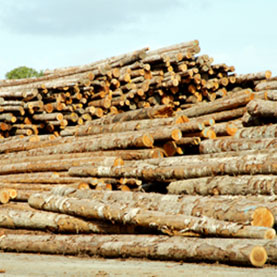Power Plants: Could a Rechargeable Battery Be Made from Paper and Pulp By-Products?
 Despite decades of predictions that a fully electronic, paperless society is almost upon us, we still live in a world populated with printed documents. This insatiable demand for plant cellulose–based writing and packaging materials may end up having a silver lining: a component for a new type of low-cost, Earth-friendly rechargeable battery.
Despite decades of predictions that a fully electronic, paperless society is almost upon us, we still live in a world populated with printed documents. This insatiable demand for plant cellulose–based writing and packaging materials may end up having a silver lining: a component for a new type of low-cost, Earth-friendly rechargeable battery.Researchers Grzegorz Milczarek from Poznan University of Technology in Poland and Olle Inganäs from Linköping University in Sweden, have combined a polymer with a waste material from the paper and pulp industry to create a new kind of battery cathode, which today are mostly made from nonrenewable metals such as lithium or cobalt. Specifically, Milczarek and Inganäs used lignin, an organic substance binding the cells, fibers and vessels that make up wood. Plants are made up of as much as 30 percent lignin, is the second-most abundant renewable carbon source on the planet after cellulose, according to the International Lignin Institute in Switzerland. Each year, paper processing generates between 35 million and 45 million metric tons of a dark waste product known as brown liquor, which is rich in lignin derivatives.
Most batteries consist of electrochemical cells with two electrodes—an anode and a cathode—and are filled with an electrolyte. The aggregate effect of the chemical reactions taking place within the electrolyte creates a flow of electrons between the anode and the cathode, resulting in the discharge of electricity.
Milczarek and Inganäs combined lignin derivatives with a polymer known as “polypyrrole” to make their test cathodes, which varied in thickness. The insulating qualities of lignin derivatives combined with the conductivity of polypyrrole create a composite material that effectively holds an electric charge, according to the scientists, whose research appears in the March 23 issue of Science.
The inspiration for the research came from the process plants use to convert light energy to stored chemical energy. In photosynthesis, electrochemically active molecules known as quinones transport electrons and protons, Inganäs explains. Animals also make use of quinones in metabolism, “to build the pH gradient which drives synthesis of ATP, or adenosine triphosphate,” he adds. If nature could create such a renewable metabolic process, the professor of biomolecular and organic electronics reasons, why not consider it as the basis for charge storage in a renewable system?
The researchers have much work ahead of them, and Inganäs cautions that it is premature to compare their prototype battery system with inorganic two-electrode batteries fabricated with metals. “There are many things to do in order to improve the charge density of the electrode, which is what we are doing now,” Inganäs says.
The biggest disadvantage to the proposed approach, however, is that the electrodes lose their charge within hours when they are idle. The researchers hope that different types of lignin derivatives could solve the problem. Given the diversity of plant life on this planet, there is no shortage of samples for the researchers to study.
You can return to the main Market News page, or press the Back button on your browser.

